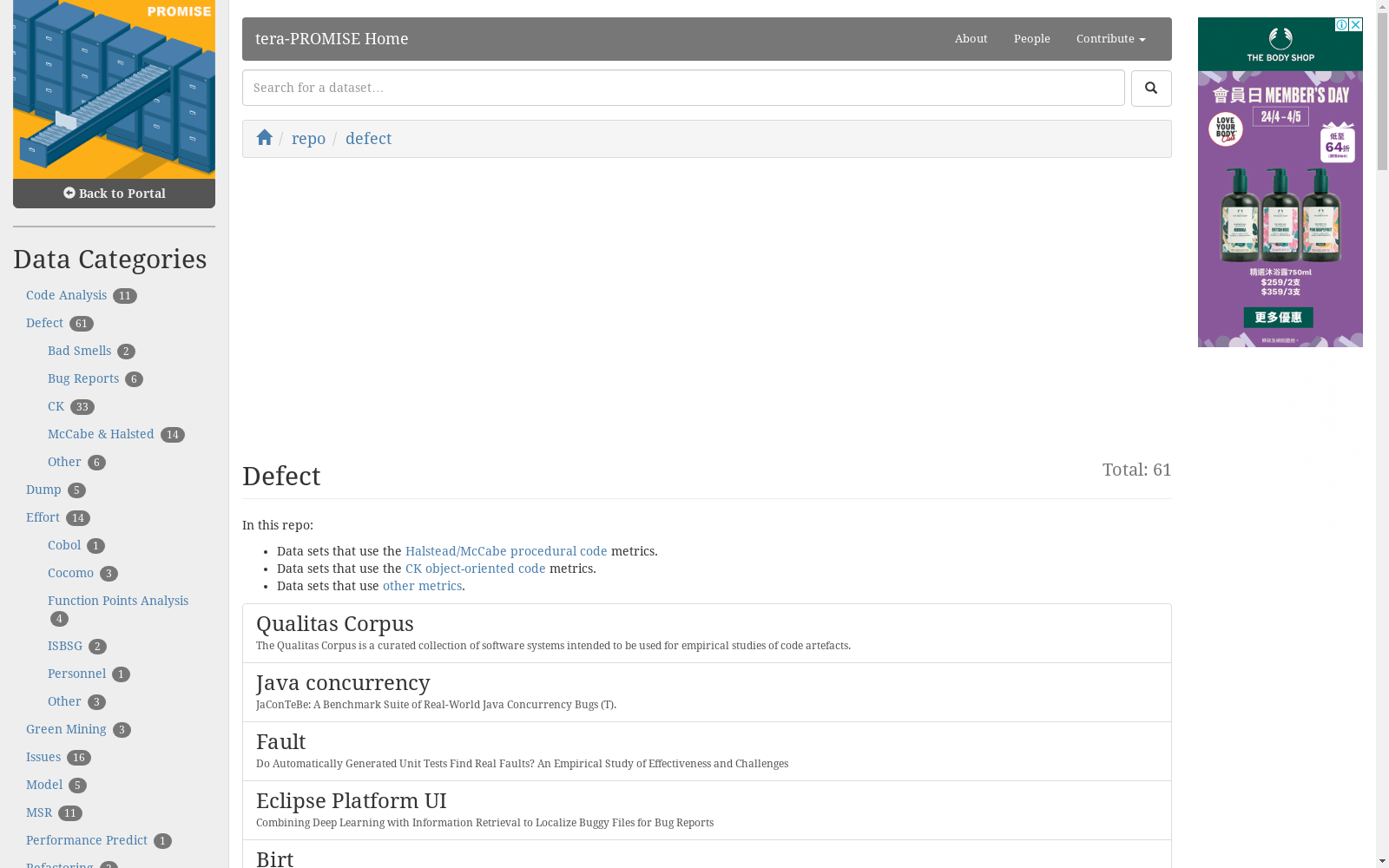NASA MDP datasets, GitHub datasets|软件缺陷预测数据集|数据分析数据集
收藏
- 1Evaluating software defect prediction performance: an updated benchmarking study肯特商学院, 英国肯特大学 · 2019年
VEDAI
用于训练YOLO模型的VEDAI数据集,包含图像和标签,用于目标检测和跟踪。
github 收录
Materials Project
材料项目是一组标有不同属性的化合物。数据集链接: MP 2018.6.1(69,239 个材料) MP 2019.4.1(133,420 个材料)
OpenDataLab 收录
中国交通事故深度调查(CIDAS)数据集
交通事故深度调查数据通过采用科学系统方法现场调查中国道路上实际发生交通事故相关的道路环境、道路交通行为、车辆损坏、人员损伤信息,以探究碰撞事故中车损和人伤机理。目前已积累深度调查事故10000余例,单个案例信息包含人、车 、路和环境多维信息组成的3000多个字段。该数据集可作为深入分析中国道路交通事故工况特征,探索事故预防和损伤防护措施的关键数据源,为制定汽车安全法规和标准、完善汽车测评试验规程、
北方大数据交易中心 收录
ERIC (Education Resources Information Center)
ERIC (Education Resources Information Center) 是一个广泛的教育文献数据库,包含超过130万条记录,涵盖从1966年至今的教育研究、政策和实践。数据集内容包括教育相关的期刊文章、书籍、研究报告、会议论文、技术报告、政策文件等。
eric.ed.gov 收录
UAVDT Dataset
The authors constructed a new UAVDT Dataset focused on complex scenarios with new level challenges. Selected from 10 hours raw videos, about 80, 000 representative frames are fully annotated with bounding boxes as well as up to 14 kinds of attributes (e.g., weather condition, flying altitude, camera view, vehicle category, and occlusion) for three fundamental computer vision tasks: object detection, single object tracking, and multiple object tracking.
datasetninja.com 收录
